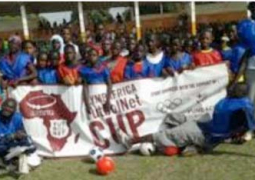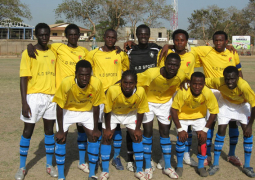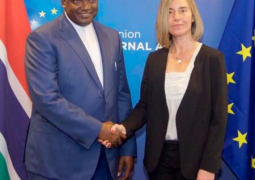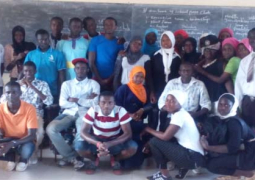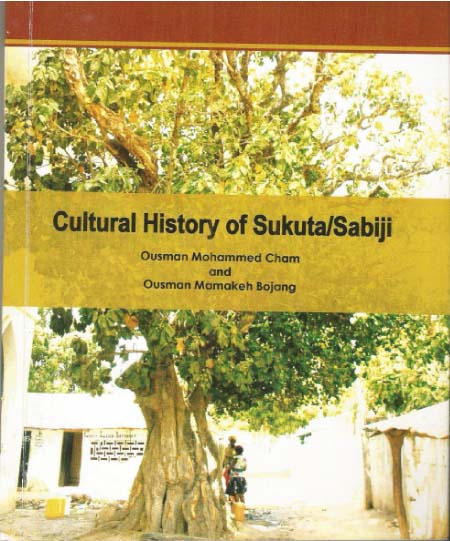
By
Hassoum Ceesay, Gambia National Museum
This
is a ground breaking historical text which seeks to enhance our understanding
of Gambian history but through the micro level of local social history. In the
past decades since John Gray’s magnum opus History of The Gambia published in
1940, several scholars have attempted to write aspects of the history of this
country, but usually in large chunks such as an overview of Gambian political history since the
demarcation of the colonial borders as Arnold Hughes and David Perfect have
done in 2006; or in large themes of colonial elite identity as Dr. Florence
Mahoney has done in her highly cited and worthy thesis ‘Government and Public
Opinion in The Gambia 1916-1901’. Such attempt at tackling our history in a
large scope or broad thematic format has succeeded in leaving out the ordinary
people in Gambian historiography. Now the good news is that this book has
exactly done the opposite by focusing on the history and culture of a single
community, Sukuta/Sabiji, 35 km outside Banjul, the capital.
Now
I must say a word or two about local history: it is simply the opposite of
national history. Local history is more specific and less ambitious in the
epochs, themes, personalities it seeks to cover. It talks about the deeds or
misdeeds of the ordinary people, and not the big people who form the elite.
Local history therefore, says Raphael Samuel(1988) ‘mobilises popular
opinion and engages popular passions’.
BalaAchi(2006) adds that ‘communities use local history as a reservoir that
satisfies their curiosity, pleases them and inspires them towards a greater
future in which they can gin respectability within the nation state’. Local
history concerns the ‘otherness’ in Southern studies.
Mr
Cham, is a seasoned civil society activist and international civil servant, and
MrBojang, is a respected University of
The Gambia lecturer and historian. The authors are therefore, the right pair
who has produced a unique book.
What
makes the book unique is that in its 11 chapters, and 160 pages, a bird’s eye view
of the 400 year history of an entire settlement is given with utmost accuracy
and in resounding language. There is neither hearsay, no rumour nor guesswork,
only historical facts. Another strong point of the book is that the authors
have written with great passion but with a good detachment and objectivity.
They belong to the community, and so could have highlighted the deeds of their
own families and ignore the achievements of other families. A third strength of
the book is the rich illustrations of photos and maps which helps to reduce the
monotony of bare text.
As
a matter of fact there is nothing in the 11 chapters which is monotonous. In
chapter one for example, the orgins of Sukuta/Sabiji is discussed starting from
the arrival of Amulie Cham, the founding scion of Sukuta in the 1650s(p.3-4).
As he was of Tukulororigins and well versed in Islam, he gave his host his
knowledge of religion, and the host in turn gave him their language, Mandinka
which the Chams happily adopted. Here we see an exemplary instance of cultural
give and take, which Gambians should continue to imbibe.Those who aspire to
live in a cultural and religious cocoon will surely wither as they will be
asphyxiated by arrogance and ignorance. In chapters 2 and 3 we have a glimpse
into the rich religious heritage of Sukuta/Sabiji dating from the 17th century
when the Chams started a religious conversion of their hosts who were
non-believers or lax Muslims (p.17-18) and the eminent role of Sukuta warriors
in the famous jihads of FodaySillah, the Islamist ruler of all Kombo (p.31). We
learn here that Sabijihad one of the biggest mosques in West Africa before it
was destroyed by the British in 1855. In chapter 4, the authors expose us to
the great men and women of Sukuta from General Lang Cham Sally (p.34), who was
an accomplished marksman and military strategist to Lang Jatta and Tida Cham
Mbalkoto(p.38), a great medicine woman who defended Sukuta from enemies. In
chapter 5, an interesting revelation is made of the nexus between Gunjur and Sabiji,
two great Mandinka settlements known for their long association with Islam; the
authors explore the intricate but highly balanced power structure in Sukuta in
chapter 6, and further explore the colonial impact of colonial rule on Sukuta.
Other social issues like education (p.85), gerontocracy (p.115) and youth
matters in the community are explored with much detail in the remaining
chapters.
From
the book, it is clear that Sukuta/Sabiji has indeed given a lot to the Gambia
as in tolerance: Sukuta is a Mandinkacommunity which has for 20 years voted in
an MP who was born and bred in Banjul who did not even speak the language of
the community, Mr AB Njie (p.106); has an Imam, a spiritual leader, a Wollof,
whose ancestors come from St. Louis in Senegal.
From
this book we also know that Sukuta has given to the Gambia accomplished and
brave women ranging from BintaTouray, the forgotten athlete; Mama Bojang and
JongkundaBojang, the political heavyweights of the 1960s(p.107), and role
models like Yama Awa Cham, one of the first female student from Sukuta among
others. This is why another title of this book can be What Sukuta/Sabiji has
Given to Gambia?
Finally,
what benefit can this book bring to Sukuta/Sabiji: first, the material here can
form the basis for a Sukuta village museum which will attract visitors from all
over the world to add value to the annual festival which takes place here. The
homes of the old chiefs such as NfansuBojang, MambunaBojang, Fakaba Bojang,
Mamadi Cham can be turned into a historic trail to attract tourist and bring
jobs into the community
Available
at Timbooktoo Tel;4494345.


